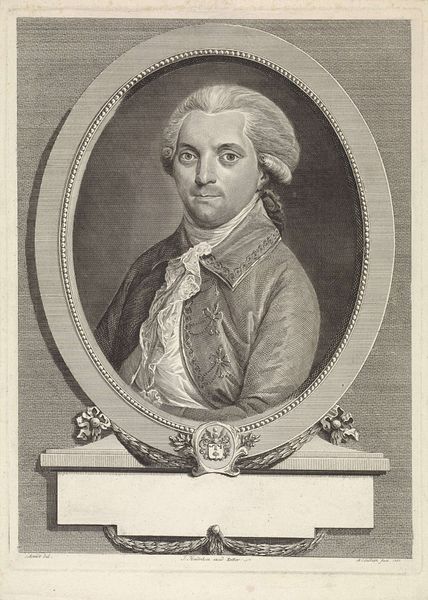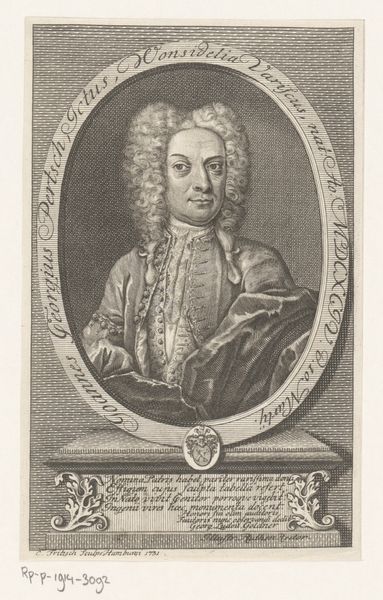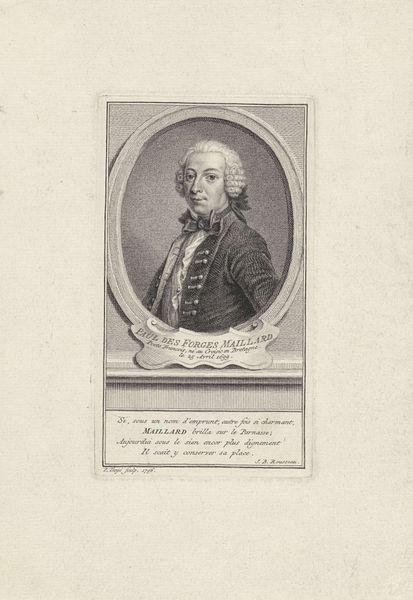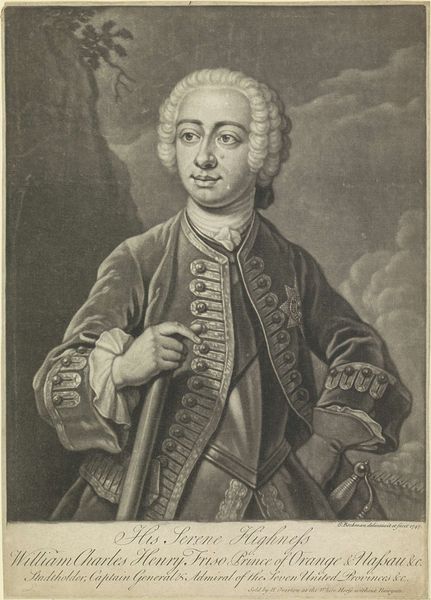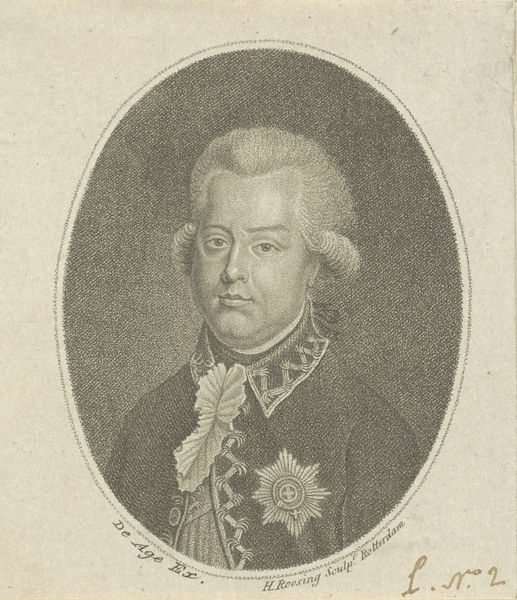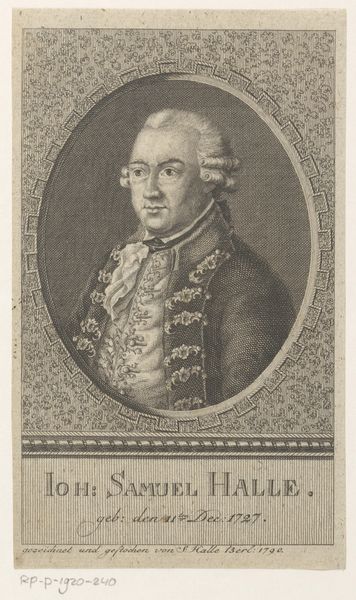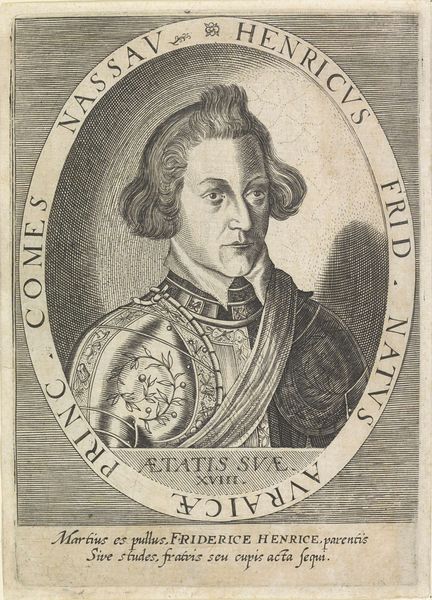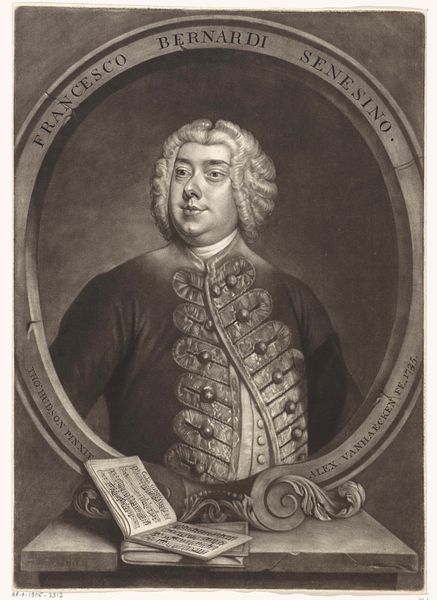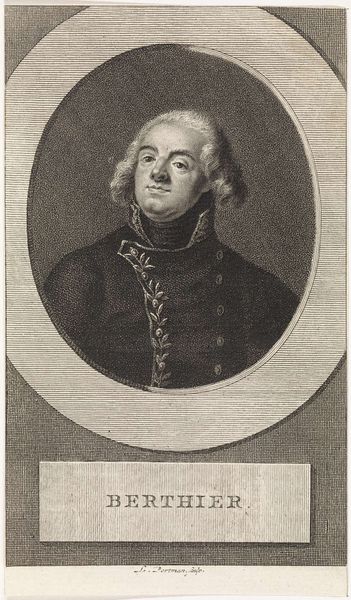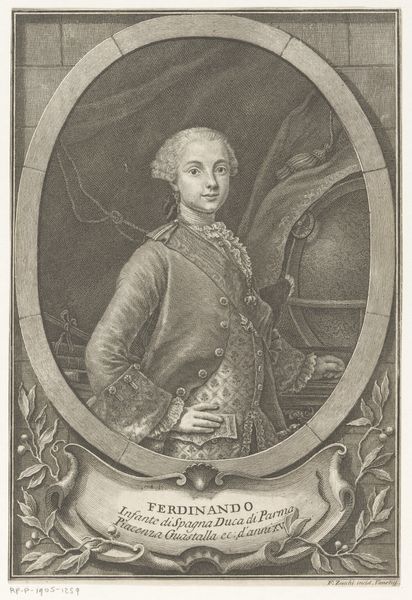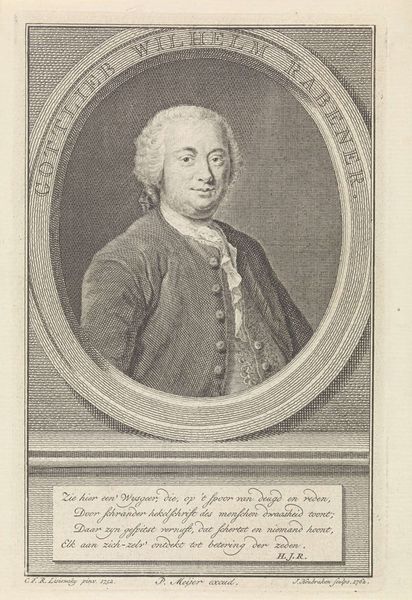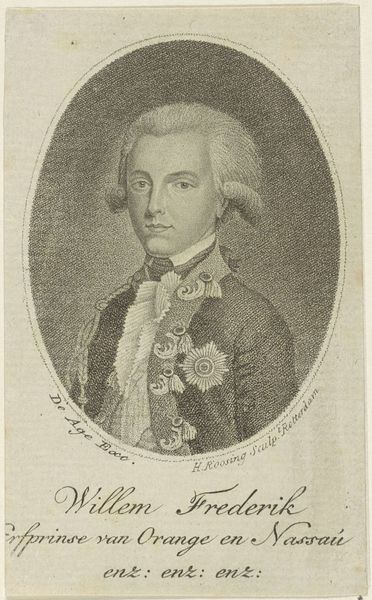
drawing, intaglio, pencil
#
portrait
#
drawing
#
baroque
#
intaglio
#
caricature
#
charcoal drawing
#
pencil
#
portrait drawing
#
facial portrait
#
portrait art
Dimensions: height 353 mm, width 252 mm
Copyright: Rijks Museum: Open Domain
Curator: This is a portrait of Carlo Broschi, also known as Farinelli, an engraving by Alexander van Haecken, created around 1735. Editor: My first impression is a striking blend of youthful softness and imposing formality. There's a disquieting innocence countered by the weight of his garments. Curator: Indeed, the textural contrasts are captivating. Notice how the velvety rendering of his jacket clashes against the rigid linearity of the trim. The subtle variations of gray across the oval accentuate his features and elaborate clothing. Editor: But who was Farinelli beyond these aesthetic elements? Understanding the historical context, it becomes crucial to acknowledge his identity as a castrato. This portrait exists in a world defined by systemic exploitation and patriarchal control over male bodies and voices. Curator: One can interpret the oval frame, and his containment within it, as a visual expression of enforced limitations, perhaps. I'm interested in how van Haecken renders the sheet music – a cascade of lines and shapes alluding to Farinelli’s professional identity. Editor: The scattered papers invite reflection. Were these works empowering Farinelli, or documents of a constrained artistry defined by trauma? It demands we acknowledge the violence intertwined with baroque spectacle. Curator: Returning to formal concerns, I note how the soft curves in his powdered wig counterpoint the angles created by the stark chiaroscuro in the face and collar. A subtle play with implied movement amidst relative stillness. Editor: And consider the expression: that faintly knowing half-smile, poised between resignation and defiance. Can that be perceived as a visual marker of subversion given the history of his life? Curator: It’s that delicate balancing act between objective observation and interpretive narrative that provides the intrigue here. Van Haecken has given us a potent document. Editor: A document that reveals how portraits of this period participated in reinforcing the era’s complex power dynamics. They underscore how art acts as both mirror and record of painful truths.
Comments
No comments
Be the first to comment and join the conversation on the ultimate creative platform.
